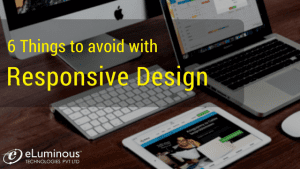Joel is applying for a loan and he is literally getting frustrated with the number of forms he has to fill out. And he would prefer to visit the local bank for a loan. What can you do as a web designer for such type of situations that should lead Joel to fill up the forms without any load?
Let’s think about it. While he is waiting for a page load, you can use one cartoon image with a message” Hey, everybody hates disclosures. We know you too. Please bear for few more clicks. You will never regret it & our loan executives would be out of strain.” There is still the possibility of not appreciating the number of forms he has to fill out but he will definitely understand the seriousness of applying for a loan.
Humour plays an important role in our lives. Researchers find humour has numerous positive benefits that can reduce stress, boost tolerance, and increase psychological well-being. You might have had experienced many times that humour lightens our mood. It is inherent in human relationships.
The question may arise do I need a comedian? Should I remove all FAQs & show some jokes? The answer for both is No. Try to incorporate humour into your design by maintaining brand integrity & keeping the process simple. The audience in general, many of them maybe your potential users enjoy humorous messages, acts daily. They share their humorous stories, experiences on social media, with friends, family, and colleagues. You just need to put this factor in an innovative way. You can use it by injecting humorous elements like unique icons to add meaning. It could encourage user & lead to deeper emotional experience, a vital component of powerful UX.
Types of Humour you can use:
It is essential to understand the context in order to use humour appropriately. Researchers have found various types of humour. You can opt any type according to your concept to increase the likeliness of success.
Personification:
Personification mainly helps us to acknowledge complex concepts & could make people more receptive to the information.
Exaggeration:
Exaggeration magnifies something out of proportion. It has been found that exaggeration makes the audience more aware you are trying to make a point of your words.
Comparison:
Comparison brings two or number of elements together to produce humour contrast.
Surprise:
Humour can arise from unexpected situations.
When should you use humour?
- On About us Page
- When it builds or fits your brand
- In chatbots
- On 404 pages
When not to use humour?
- When you want user to pull off critical tasks
- When it is totally out of line, interprets sarcasm
- When it is conveying false information or creating distraction
I hope you have enjoyed something humorous from me today! You can actually implement these ideas with the technical expertise of our web designers & their extensive industry experience for your business concepts. Give us a try. Let’s talk now!
Digital Marketing Manager
Responsible for developing and managing web presence, Sarah has been associated with eLuminous Technologies for 7+ years. Strategic and innovative with a passion for Content Marketing and enhancing brand awareness. Administered all business marketing operations and advertisement campaigns that eventually increased web traffic. She works under the motto “Think like a Publisher, not a Marketer.”



